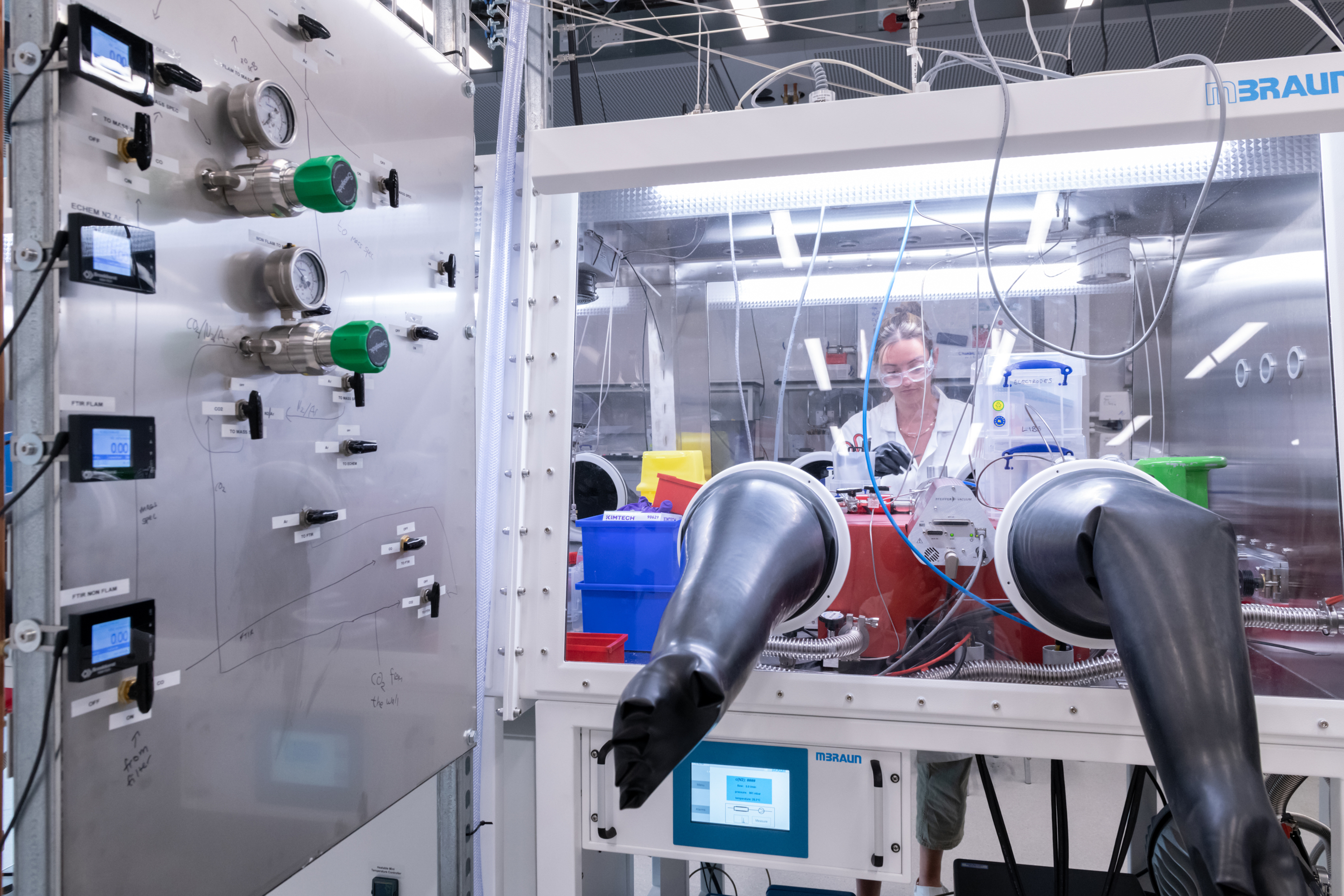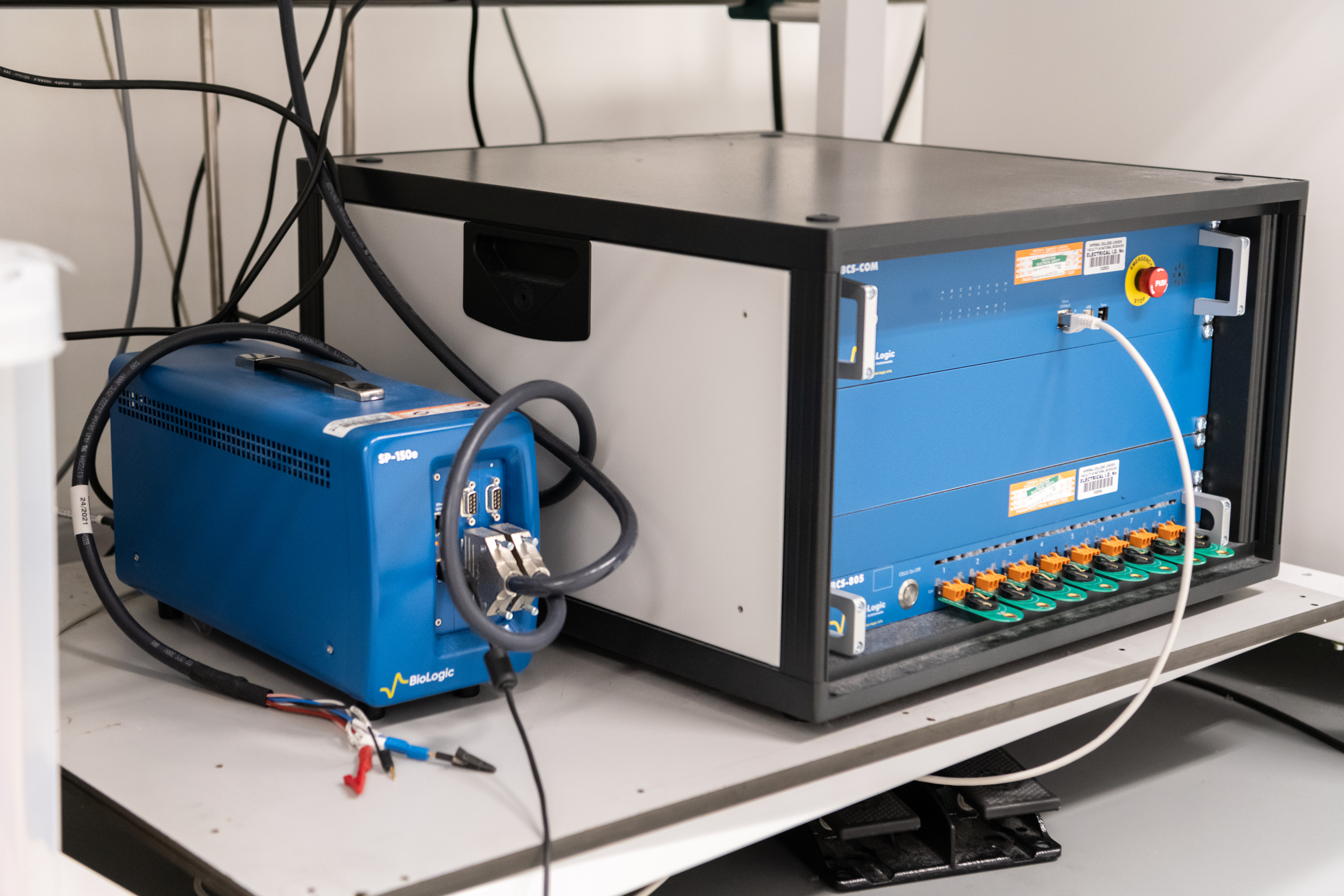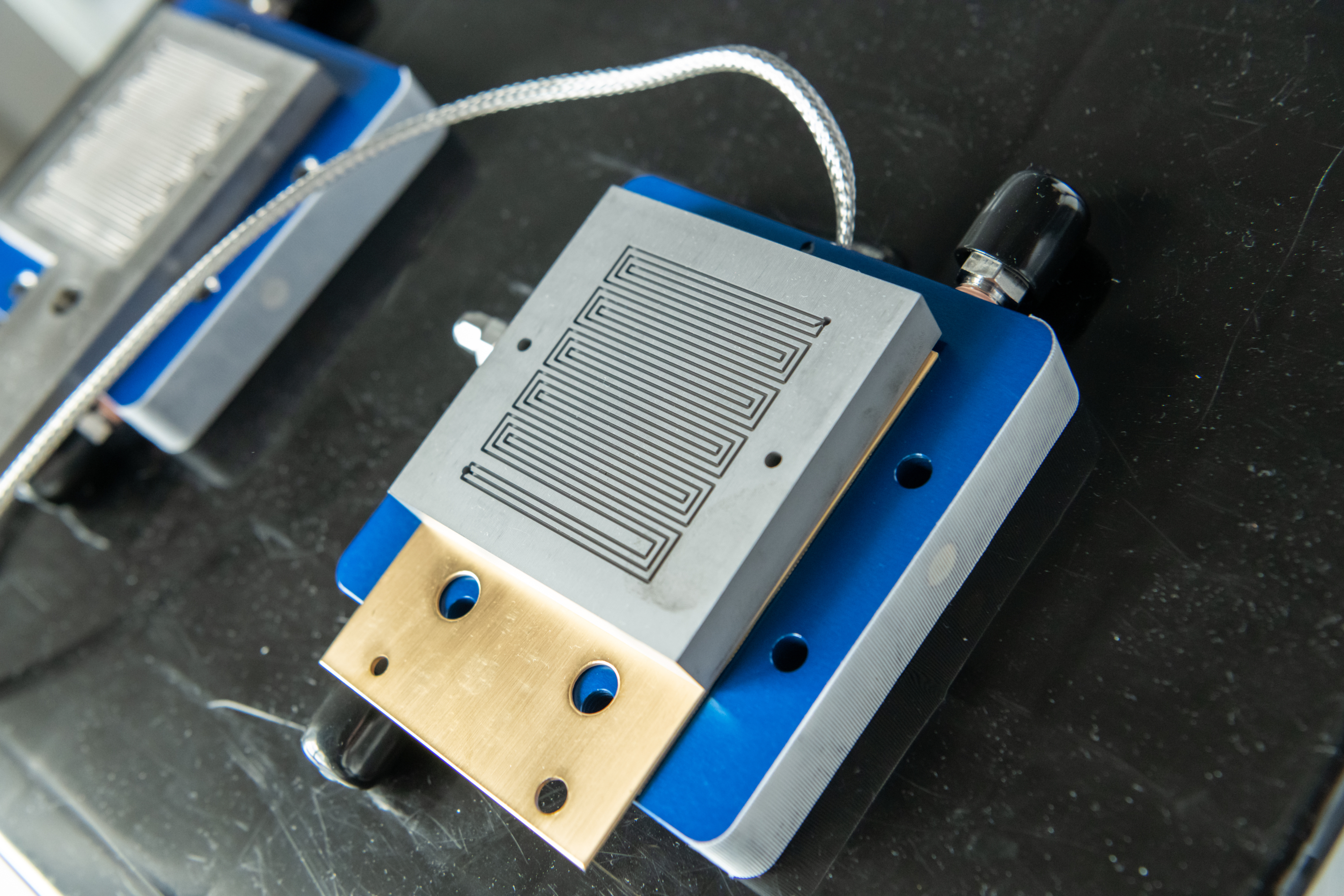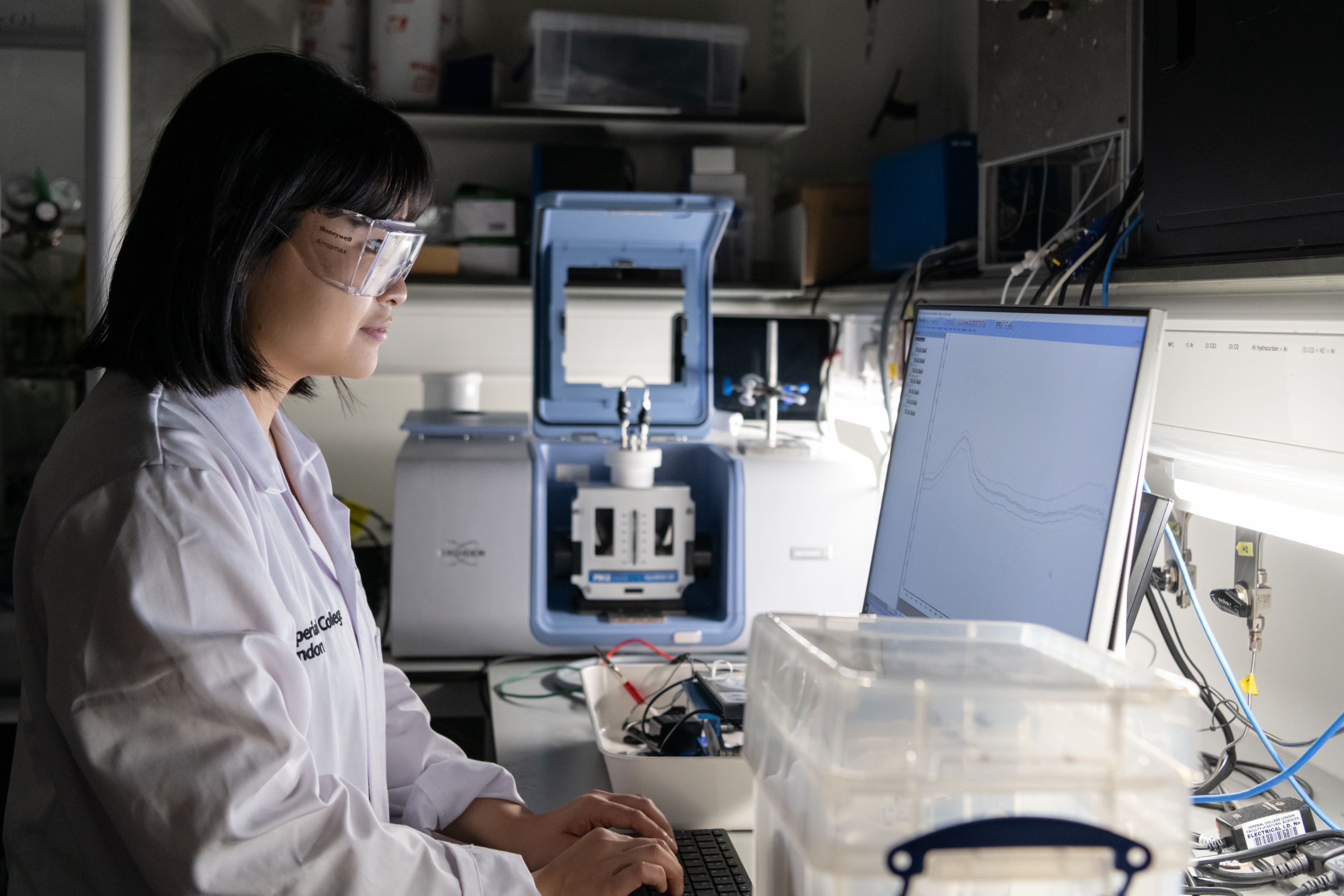Tabs 1
- Gloveboxes
- Battery Cycler
- PEM Electrolyser Test System
- EC Mass Spectrometry
- FT Infrared Spectrometer

MBraun UNIlab Pro; MSRH B02
- Working Gas: Argon (with O2 and H2O < 0.1 ppm);
- Dedicated Use: Lithium-mediated N2 reduction
- Dimensions: 2500 mm (L) x 920 mm (H) 1000 mm (D) User Ports:
- User Ports: 4 gloves (same side)
MBraun UNIlab Pro; RSM LG27
- Working Gas: Argon (with O2 and H2O < 1 ppm)
- Dedicated Use: Battery materials research (specifically Na-ion, Li-ion and LiS).
- Dimensions: ~1250 mm (L) x 920 mm (H) 1000 mm (D)
- User Ports: 4 gloves (on opposing sides)
 Biologic BSC-805 Battery Cycler; RSM LG27
Biologic BSC-805 Battery Cycler; RSM LG27
The high-performance BSC-800 battery cycler series boasts an impressive range of specifications, as standard, that surpasses all other battery cyclers currently available on the market. With an 18-bit current and voltage resolution, the BCS-800 battery cycler series has been developed to generate high-precision high-accuracy measurements. Five current ranges yield excellent resolution down to 0.2/2/20 nA. Moreover, a large voltage range of 0 – 9*/10 V (815*) with a 40 µV resolution offers a wide potential window for demanding applications with an outstanding resolution. The battery cycler also includes analogue input/output and trigger input/output that can be used to control and communicate with an external device, such as a thermostatic chamber.
The BCS-805 has a maximum current of ±150 mA per channel, making it highly suited for small batteries such as coin cells and is paired with a 2-channel Potentiostat, enabling users to run 2 experiments from the same potentiostat simultaneously.
 600 ETS Electrolyzer Test System; Michael Uren Hub L8 Royce Imperial Facility
600 ETS Electrolyzer Test System; Michael Uren Hub L8 Royce Imperial Facility
The 600 ETS is a state-of-the-art, full-featured bench-top instrument for detailed evaluation and characterization of PEM electrolyzers. The 600 ETS includes an integrated Power Supply, Potentiostat, Impedance Analyzer for EIS & HFR, and real-time sensors for Product Flow Rate and Cross-over Monitoring. The 600 ETS is ideal for labs requiring detailed control, diagnostic and analysis of a single electrolzyer cell.
Powerful FlowCell-ETS® software offers full control and monitoring of the test cell. Built-in experiments include constant, scanning or step-stair voltage or current-controlled measurements. Easy, hands-free switching between control of the voltage or current by the Potentiostat or Power Supply.

 Electrochemical Mass Spectrometry
Electrochemical Mass Spectrometry
SpectroInlets On Chip Electrochemical Mass Spectrometry (EC-MS); MSRH B01
The chip-based electrochemistry mass spectrometry (EC-MS) system from Spectro Inlets enables detection of gaseous products from an electrode surface with extreme sensitivity, down to less than 1 pmol/s, enabling accurate quantification of the activity of e.g. water splitting and CO2 valorization activity at low overpotential. It facilitates a fully controlled electrochemical environment enabling step-function introduction of reactant gases, making it ideal for mechanistic studies in electrocatalysis. It is an illustrative window in to electrocatalysis useful for teaching as well as cutting-edge research. The EC-MS is paired with a Biologic SP-150 one-channel Potentiostat.
 Surface-enhanced infrared absorption spectroscopy - Fourier Transform Infrared Spectrometer
Surface-enhanced infrared absorption spectroscopy - Fourier Transform Infrared Spectrometer
Bruker INVENIO-R Fourier Transform Infrared Spectrometer; MSRH B01
A dedicated FTIR spectrometer for operando Surface-enhanced infrared absorption spectroscopy measurements under aqueous electrochemical conditions. Surface-enhanced infrared absorption spectroscopy (SEIRAS) is a cutting-edge vibrational spectroscopy which can identify adsorbed intermediates by probing their vibrational frequencies for a range of (photo)electrochemical energy conversion technologies such as carbon dioxide electroreduction, biomass up-conversion and water electrolysis for green hydrogen production. In addition to identifying key reaction intermediates and the catalytic sites at which they form, this technique can also directly probe the time-resolved dynamics of these intermediates and their interaction with the interfacial solvent environment. The SEIRAS-FTIR is paired with a Biologic SP-150 one-channel Potentiostat.